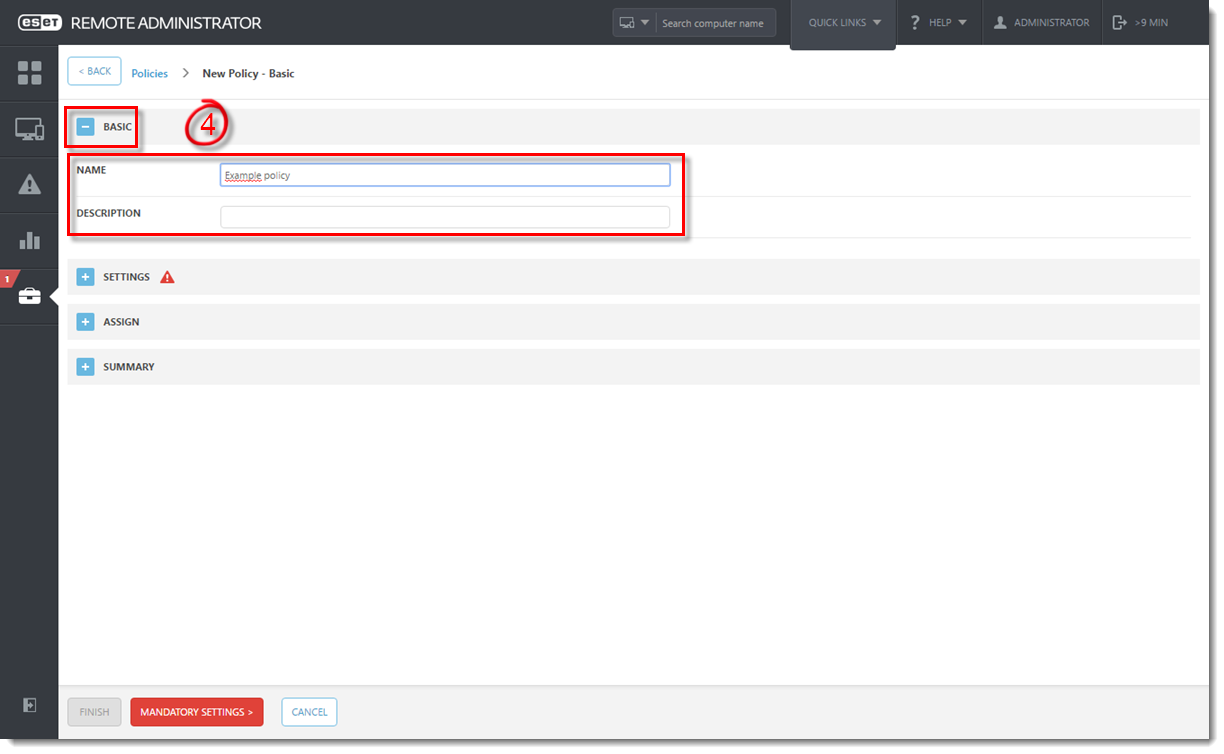Issue
ESET business product no longer supported
This article applies to an ESET product version that is currently in End of Life status and is no longer supported. The content in this article is no longer updated.
For a complete list of supported products and support level definitions, review the ESET End of Life policy for business products.
- Create a policy using the ESET Remote Administrator Web Console (ERA Web Console)
- Assign a policy to a group
Solution
ERA 6.5 User Permissions
This article assumes that your ERA user has the correct access rights and permissions to perform the tasks below.
A user must have the following permissions for their home group:
| Functionality | Read | Use | Write |
| Policies | ✓ | ✓ | ✓ |
| Groups & Computers | ✓ | ✓ | ✓ |
Once these permissions are in place, follow the steps below.
- Open ESET Remote Administrator Web Console (ERA Web Console) in your web browser and log in.
- Click Admin
 → Policies.
→ Policies. - Click Policies → New.

Figure 1-1
Click the image to view larger in new window - Expand Basic and type a name for the policy into the Name field (the Description field is optional).

Figure 1-2
Click the image to view larger in new window - Expand Settings. Select the product this policy will affect from the Select product drop-down menu. In this example, we are creating a rule for ESET Endpoint for Windows.
- In the menu on the left, select the category for the rule you want to set. In this example, we are creating a User Interface rule.
- In the center pane, configure your rule. In this example, we are disabling Show splash-screen at startup.

Figure 1-3
Click the image to view larger in new window - Expand Assign and click Assign.

Figure 1-4
- Select the check box(es) next to each static or dynamic group you want this policy assigned to and click OK.

Figure 1-5
- Click Finish to save your policy. Your policy settings will be applied to the target groups or client computers.
To see the policies that are assigned to each group, click Computers, click the gear wheel icon ![]() next to the group, and then select Manage Policies from the drop-down menu.
next to the group, and then select Manage Policies from the drop-down menu.
Figure 1-6
Click the image to view larger in new window
For more information about policies, read Online Help.
Related articles:
- Create a new policy in ESET Security Management Center (7.x)
- How do policies work in ESET Remote Administrator? (6.x)
Source : Official ESET Brand
Editor by : BEST Antivirus KBS Team
How useful was this post?
Click on a star to rate it!
Average rating 0 / 5. Vote count: 0
No votes so far! Be the first to rate this post.


